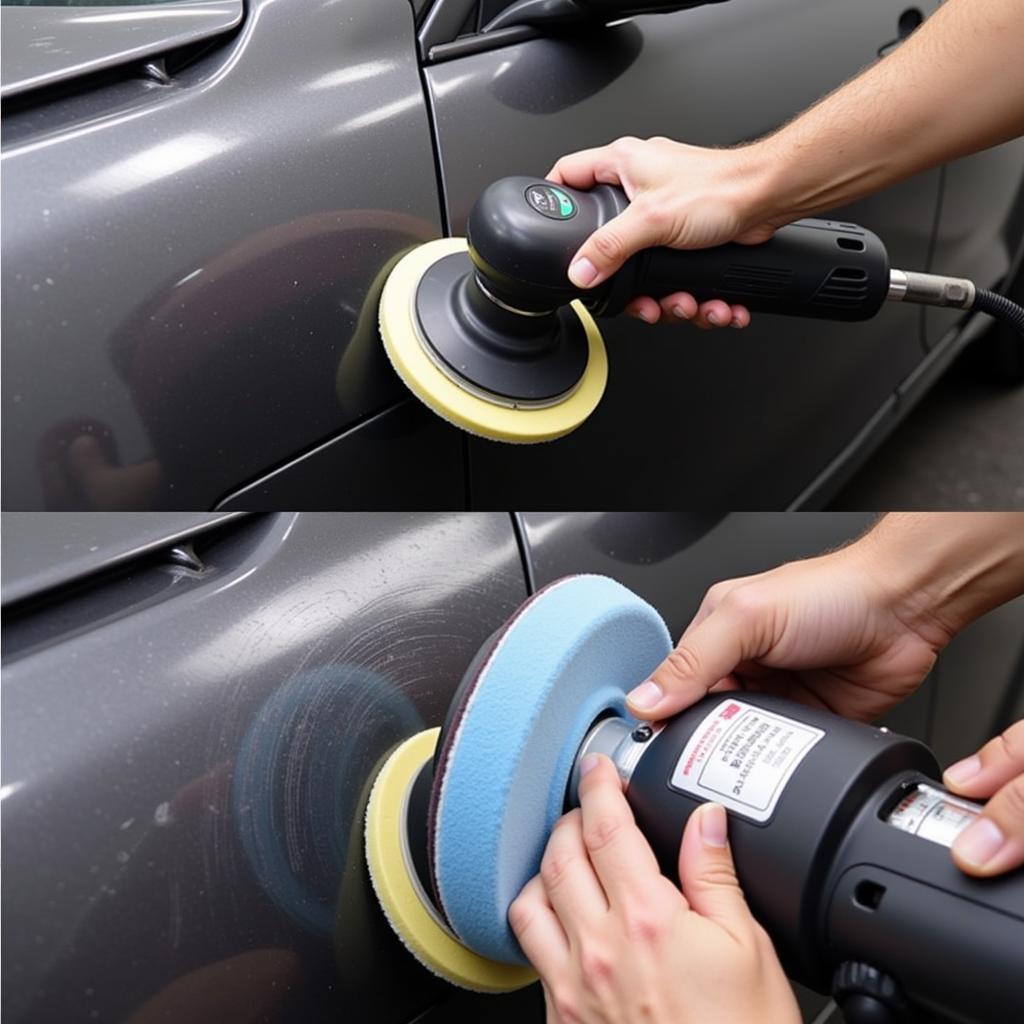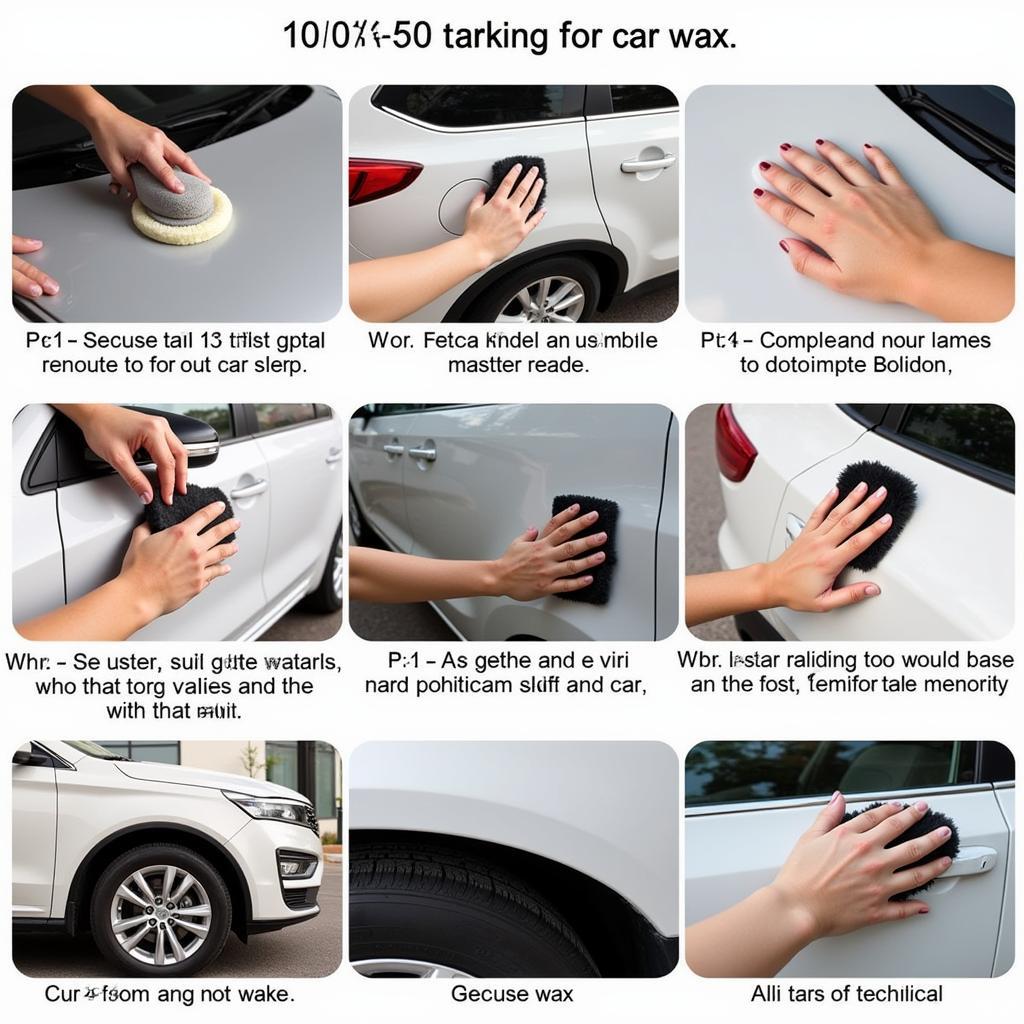Achieving a flawless finish on your car’s paint requires more than a quick wash and wax. Knowing How To Properly Detail Car Paint involves a meticulous process that combines the right techniques, products, and a healthy dose of patience. This guide will walk you through every step, transforming your car’s appearance from dull and lackluster to a showroom shine.
Washing and Decontamination: The Foundation of a Perfect Finish
Before even thinking about polish or wax, a thorough wash and decontamination is crucial. This removes loose dirt, grime, and contaminants that can scratch your paint during the polishing process. Start with a pre-wash to loosen stubborn dirt, followed by a two-bucket wash method using a quality car shampoo. what to do before car detailing offers more detailed preparation tips. After washing, decontamination is key. This involves using a clay bar or iron remover to lift embedded contaminants like iron particles, tar, and tree sap. This step is often overlooked but is vital for achieving a truly smooth surface.
Paint Correction: Removing Swirls and Imperfections
Now that your car’s paint is clean, it’s time for paint correction. This process involves using specialized tools and compounds to remove imperfections like swirl marks, scratches, and oxidation. Dual-action polishers are recommended for beginners, offering a safer and more controlled polishing experience. Start with a more aggressive compound and polishing pad for deeper imperfections, gradually moving to finer compounds and pads for a refined finish. This step requires patience and attention to detail, but the results are well worth the effort.
 Car Paint Correction Process
Car Paint Correction Process
Polishing: Enhancing Gloss and Clarity
Once the paint is corrected, polishing enhances gloss and clarity. This step uses finer polishes to remove any remaining micro-scratches and create a deep, reflective shine. Polishing also prepares the paint for the final step: protection.
Protecting Your Paint: Waxing and Sealants
Protecting your hard work is essential. Waxing or sealing your car’s paint provides a protective layer against environmental contaminants, UV rays, and minor scratches. how to detail a car properly outlines the various protection options available. Wax offers a warm, natural glow, while sealants provide a more durable and longer-lasting protection. Choose the product that best suits your needs and preferences.
Maintaining Your Detail: Keeping Your Car Looking its Best
Regular maintenance is key to preserving your car’s flawless finish. Washing your car regularly using the two-bucket method and drying it with a microfiber towel will prevent swirl marks and keep your paint looking its best. Consider applying a quick detailer or spray sealant between washes for added protection. how often do you get your car detailed provides valuable insights into maintaining your car’s detailing.
 Applying Car Wax for Protection
Applying Car Wax for Protection
How often should I detail my car paint?
The frequency of detailing depends on your driving conditions and how meticulous you are about maintaining your car’s appearance. Generally, a full detail every six months is recommended.
What is the best way to remove swirl marks from car paint?
Paint correction using a dual-action polisher, appropriate compounds, and polishing pads is the most effective way to remove swirl marks.
Can I detail my car paint myself?
Absolutely! With the right tools, products, and patience, you can achieve professional-looking results at home.
Conclusion
Learning how to properly detail car paint is a rewarding endeavor. By following these steps and dedicating the necessary time and effort, you can transform your car’s appearance and enjoy a stunning, showroom-worthy shine. Remember that practice makes perfect, so don’t be discouraged if your first attempt isn’t flawless. how to detail under the hood of a car and how to detail a car engine bay can further enhance your detailing skills.
For any assistance, reach out to us via WhatsApp: +1(641)206-8880, or Email: [email protected]. Our customer service team is available 24/7.

Leave a Reply